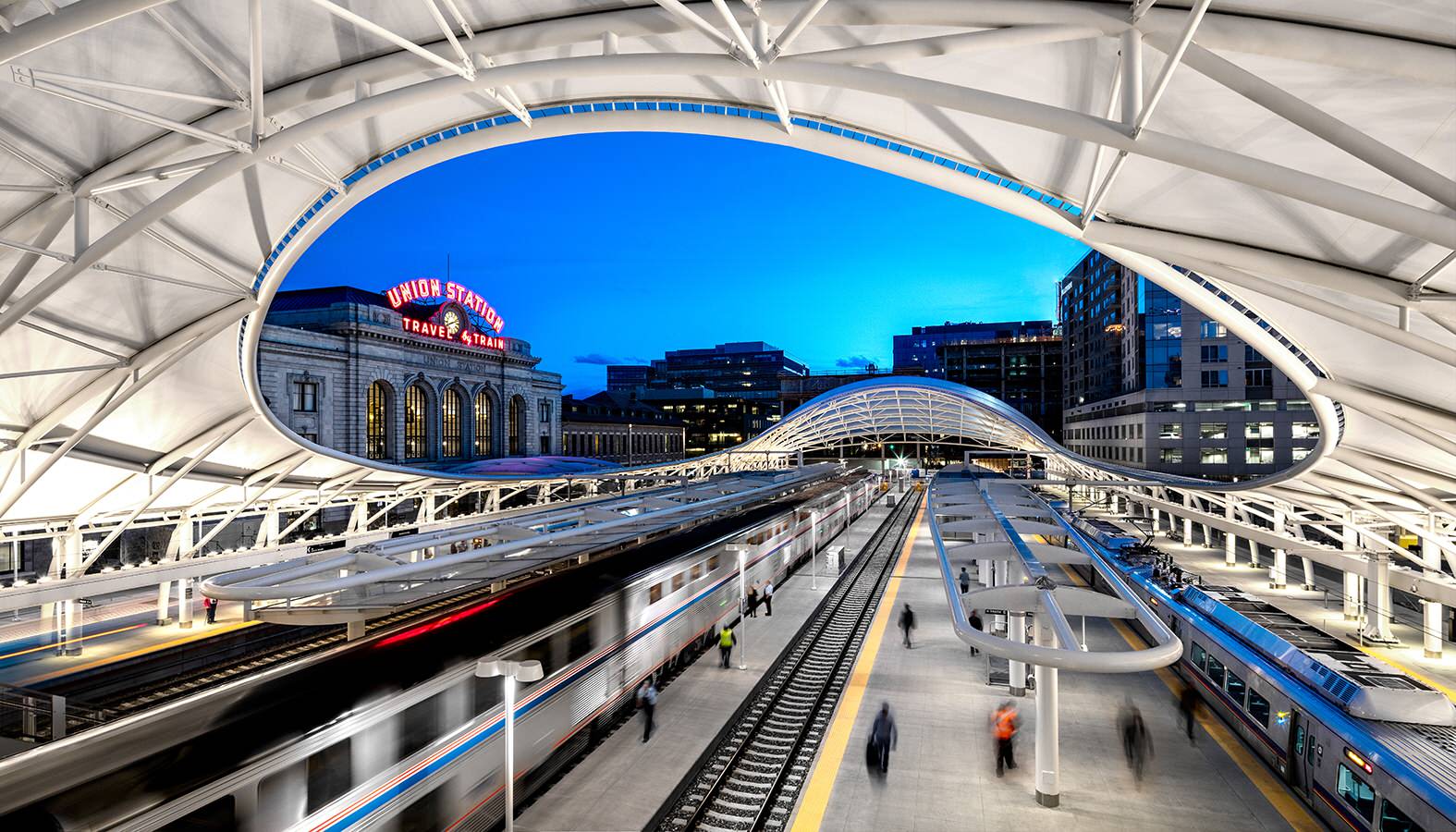
Hamburg, September 30, 2014 – Rail travel typically only starts to become an experience during the journey itself. Sometimes, though, the adventure begins before even leaving the platform. Increasing numbers of cities are adorning themselves with eye-catching station buildings that, with their unconventional roof structures, bright colors and extravagant shapes, become unique architectural landmarks of those cities. Emporis, the international provider of building data, has now compiled a selection of the world’s most spectacular train station buildings.
One of the most outstanding new projects is the Gare de Liège-Guillemins in Belgium, its stunning impact created by a gigantic arched roof spanning the entire length of the station. The 312-million-euro station was designed by the renowned architect Santiago Calatrava and connects Liège, by the means of latest-generation high-speed trains, with major European cities such as Paris, London, Brussels or Cologne.
Also highly popular are elaborate and unusual renovations of historic station buildings. In the case of the Gare de Strasbourg, renovated in 2007, the curved glass cladding forms a futuristic contrast to the historic facade of the station, making it look from the outside like a stranded UFO. At London’s King’s Cross Railway Station, on the other hand, it is not just the fictitious Platform 9 ¾ from the Harry Potter stories that entrances travelers, but also the 20-meter-high steel roof that has stretched out in diamond and triangle shapes over the Victorian terminus since 2012. An especially colorful project is the station in the northern German town of Uelzen: This was redecorated in 2000 in the unmistakable style of the artist Friedensreich Hundertwasser and is the world’s only Hundertwasser station.
At least equally as impressive are the stations dating from the early days of rail tourism, architectural masterpieces that have retained the flair of times past. The Grand Central Terminal in New York City, for instance, has been one of the world’s most prominent stations since it opened in 1913 and is visited by over 21.6 million tourists every year. The monumental Chhatrapati Shivaji Terminus in Mumbai was even elevated in 2004 to the status of a UNESCO World Heritage Site and is, to this day, India’s busiest train station.
Moving into the future, fans of modern station architecture will continue to have plenty to marvel at. Cities such as Anaheim or New York, with the ARTIC Station and the World Trade Center Transportation Hub respectively, have two soon-to-be-completed projects that will set new standards in station architecture.
